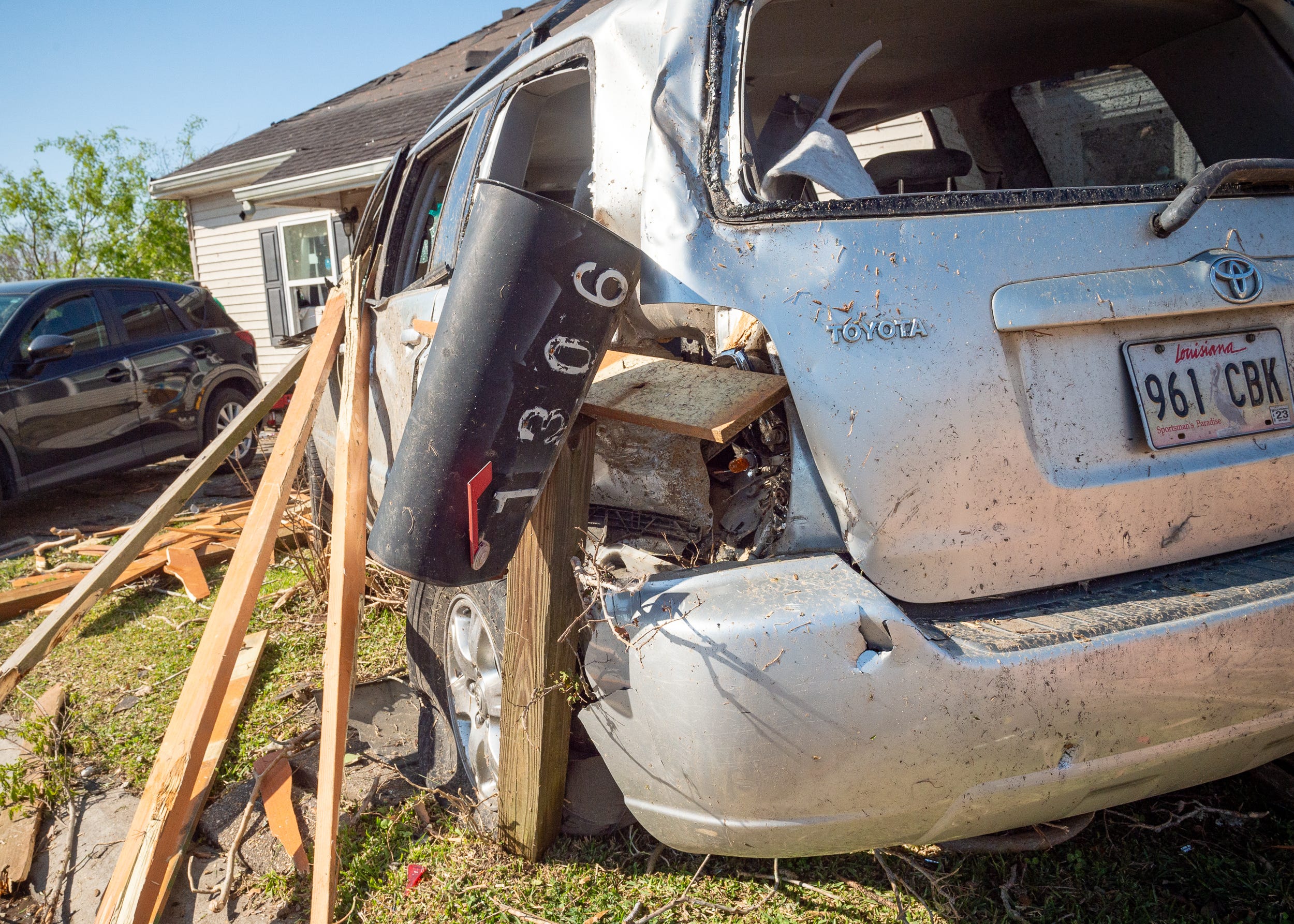Powerful tornadoes are relatively rare in the New Orleans area. Is global warming changing that?
While scientists have linked droughts, wildfires and flooding to the warming climate, connections to tornado activity are more difficult to discern.

The powerful tornado that claimed one life and caused widespread damage as it roared through the New Orleans area Tuesday was one of the region’s strongest in history and one of more than 100 to strike in the past four decades.
Preliminary survey results from the National Weather Service found a trail of destruction over 11 miles and concluded the tornado was likely an EF-3 on the 0 - 5 scale used to categorize tornadoes. There was damage in Jefferson, Orleans and St. Bernard parishes, including in Arabi, where 25-year-old Connor Lambert was killed.
Such powerful storms are relatively rare across the country and in Louisiana, said Harold Brooks, a senior research scientist at the National Severe Storms Laboratory in Norman, Oklahoma. But they occur more often than people realize, he said.
Statewide, 59 tornadoes of EF-3 magnitude or greater have been reported in Louisiana since 1980, weather service records show.
Four of those occurred in the New Orleans metropolitan area, including an EF-4 tornado in St. John the Baptist Parish in December 1983.
With the country in the grip of warming temperatures that fuel more extreme storms and more intense wildfire seasons, Brooks and other researchers often field questions about whether climate change is affecting tornadoes.
So far, scientists don’t have definitive answers, Brooks said.
In Louisiana’s case, the state is in a region “pretty vulnerable” to extreme weather, even though it may not see as many tornadoes as states like Mississippi and Alabama.
Seven hurricanes and tropical storms made landfall in Louisiana in 2020 and 2021, and thousands are still trying to recover. At least one resident in a home heavily damaged by Tuesday's tornado in Arabi was displaced by Hurricane Ida last year. The state has seen 50 disaster declarations since 2000.
The state’s residents “have become all too familiar with rebuilding after tragedy and loss,” Gov. John Bel Edwards said Wednesday.
A second tornado in St. Tammany Parish on Tuesday was rated an EF-1, with 90 mph winds. The tornadoes blew out windows, whipped off roofs, tossed trees and injured several.
In general, some areas of the South, including Tennessee and Alabama, have seen an increase in tornado activity in recent years. The nation also has seen an increase in the number of tornadoes that occur in single-day outbreaks, and traditional spring and summer tornado seasons are starting earlier in the year and ending later, Brooks and others have reported.
Though it’s tempting to connect such observations to the warming climate, Brooks said, scientists have not established clear-cut links.
They do suspect the warming climate could increase the energy available to form the kinds of convective storms that give birth to tornadoes, said Tyler Fricker, an assistant professor at the University of Louisiana Monroe.
A recent report from the United Nations Intergovernmental Panel on Climate Change found high confidence that rain rates associated with severe convective storms would increase in a warming world. Already the warming Gulf of Mexico pumps more moisture into the warmer air and sends more intense, flooding rainfall across much of the eastern half of the country.
Extreme rainfall: How a summer of extreme weather reveals a stunning shift in the way rain falls in America.
The U.N. panel, however, said “significant uncertainty” remains about the projected effects on tornadoes.
Researchers are eager to answer these questions, Fricker said. Though they’re not seeing a change in the number of EF-4 and EF-5 tornadoes, they do see evidence that suggests tornadoes may be staying on the ground longer or expending more energy than in the past.
Warmer temperatures and more moisture in the air may be influencing some of the changes in activity at some level, Fricker said, “but we’re not certain what that level is.’”
He has spent the past year studying tornado activity in Louisiana, focusing on deaths and casualties.
Parishes to the west see more activity than the New Orleans area, in part from storms that move in from Texas and in part from tropical activity off the Gulf of Mexico, he said.
Lafayette is the city hit most often by tornadoes, followed by Shreveport, which has nearly twice the number of EF-3 tornadoes as other parishes and the most tornado-related fatalities and injuries, he said. Risks in Lafayette and Shreveport are “significantly higher” than New Orleans and Baton Rouge.
Still, the four parishes affected Tuesday in the New Orleans region have experienced more than 130 tornadoes since 1980. That includes an EF-3 tornado with 150 mph winds in Orleans Parish on Feb. 7, 2017. An EF-3 associated with Hurricane Andrew’s landfall in Louisiana in 1992 struck neighboring St. John the Baptist Parish.
Contact Dinah Voyles Pulver at dpulver@gannett.com.
